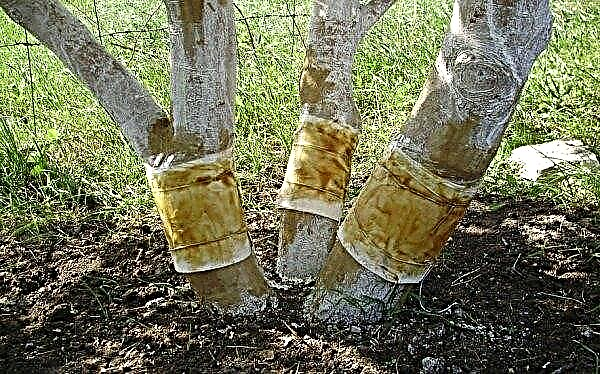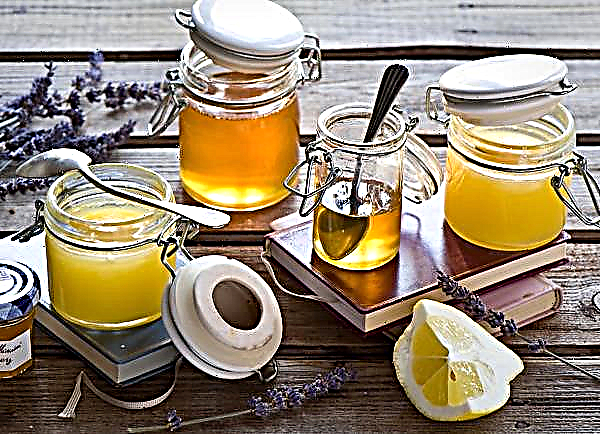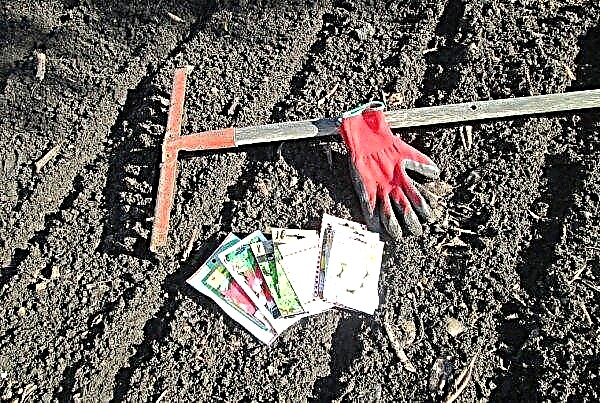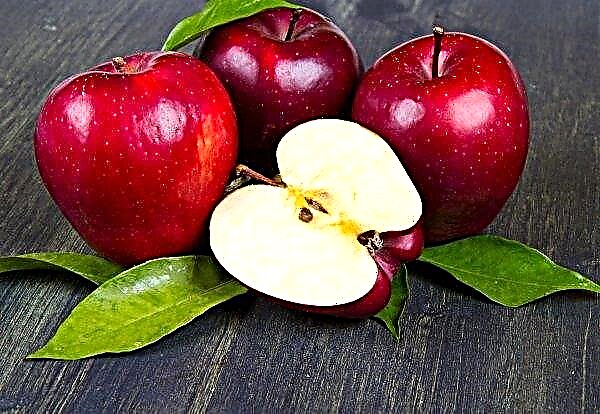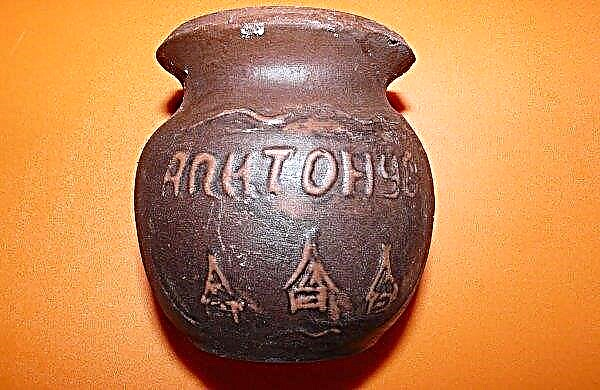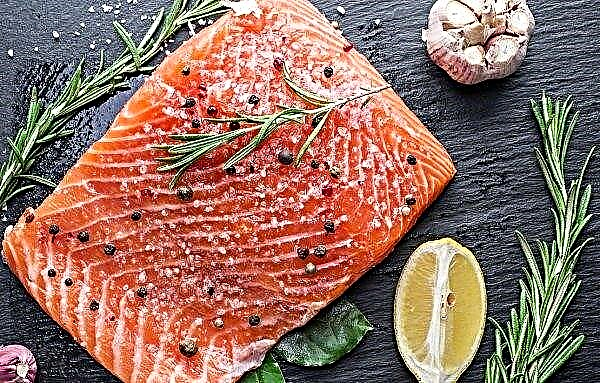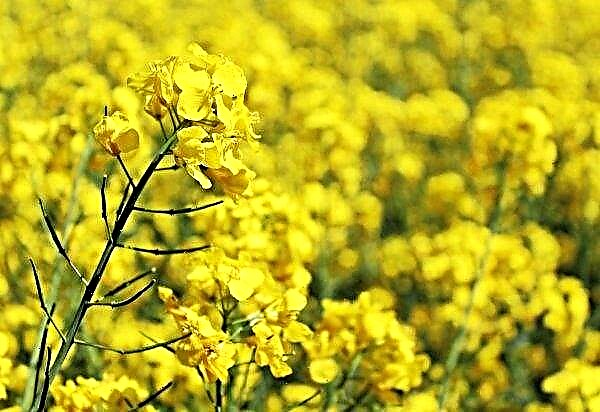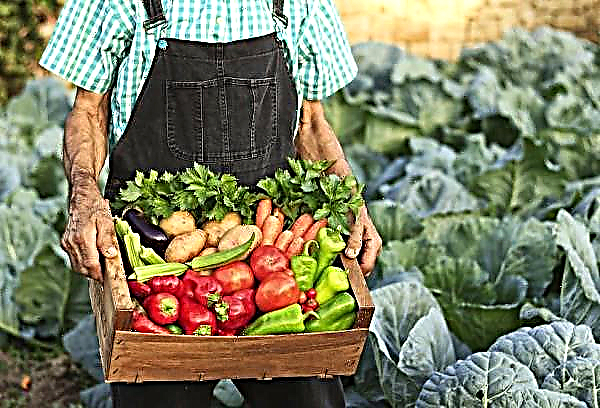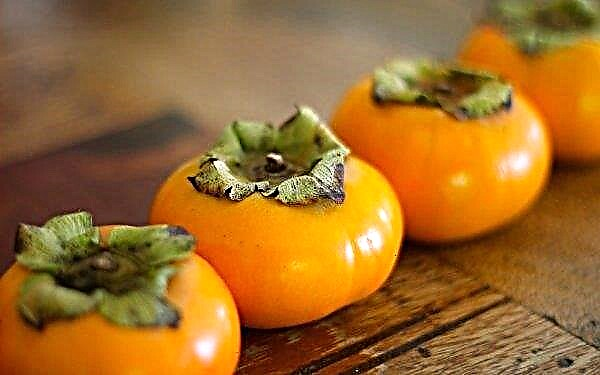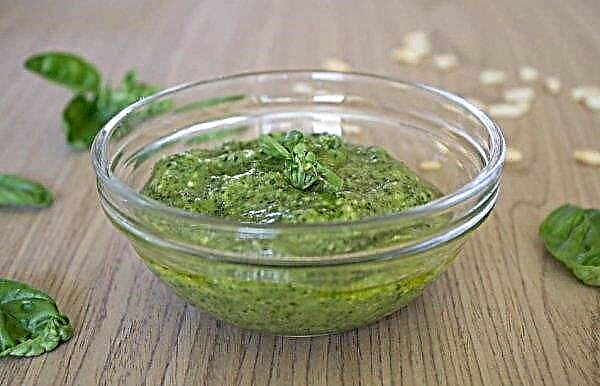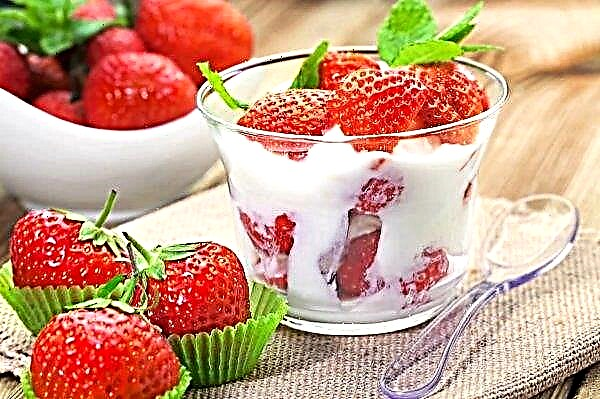Honeysuckle Boreal Beauty - one of the latest Kamchatka varieties. It is a perennial high-yielding shrub with large, tasty fruits. The culture has no analogues in its magnesium content and is rich in vitamins A, B, C, lactose, fructose, as well as many organic acids. Most gardeners consider this variety a real breakthrough. Why it is so unique and what is the peculiarity of breeding will be discussed later.
Selection history
Selection programs of the University of Saskatchewan (Canada) allow you to get advanced varieties of honeysuckle. One of the breakthroughs in the selection of culture was the hybrid North Beauty (Boreal Beauty). The new plant variety includes 37.5% of the genes of the Japanese forms, 37.5% of the genes of the Russian varieties and 25% of the genes of the Kuril species.
In 2017, Dr. Bob Bore passed the breed for propagation. The uniqueness and obvious advantage over other representatives of the species is long fruiting (up to 2 months), and the berries reach enormous sizes (up to 3.7 g).
Did you know? The Latin name Lonicera culture received in honor of the German botanist, physicist and mathematician Adam Lonitzer. Although Carl Linnaeus wanted to name the plant Caprifolium - due to the wide distribution of honeysuckle honeysuckle in European gardens.
Botanical Description
Variety Boreal Beauty has a number of distinctive characteristics:
| berries | large (2.6-3.7 g), oval, heart-shaped |
| Colour | gray purple |
| taste | sweet sour, without bitterness |
| bush habit | dense and vertical, sturdy shoots, stiff |
| height | 1.5–2 m |
 The variety has a long rest period and is resistant to powdery mildew.
The variety has a long rest period and is resistant to powdery mildew.
Characteristic
Recently, gardeners have increasingly begun to grow honeysuckle. The reason for this was not only the non-standard taste and shape of the fruit, but also the amazing resistance to uncomfortable weather conditions and the yield of the variety.
Frost and drought resistance
Honeysuckle is characterized by record winter hardiness and can withstand temperature drops to -50 ° C, and plant flowers can withstand frosts to -8 ° C. But during the winter period with long thaws, premature budding of the kidneys is possible. Consequently, the return of frost can damage them.
The plant can tolerate the heat much worse and requires regular watering in a dry summer. That is why the variety is not widespread in the southern regions.
Did you know? Only a few species of honeysuckle are edible, the rest are poisonous. You can distinguish the latter by the color of the berries - they are red or orange.
Fruiting, yield
Honeysuckle is considered a fairly early plant. It can bear fruit in the first year after planting, but gives a plentiful harvest only from 2-3 years of life (1.5-3 kg from the bush). Boreal Beauty is a late-ripening variety. Fruit harvesting occurs in late July - early August. Fruits regularly and stably for 2 months.
Advantages and disadvantages
Honeysuckle Boreal Beauty is one of the most useful crops. Bushes are capable of bearing fruit for more than 40 years.
- The main advantages of honeysuckle include:
- frost resistance;
- durability;
- unpretentiousness in leaving;
- resistance to powdery mildew and pest invasion;
- plentiful harvest;
- good portability of transportation;
- berries do not fall off the shoots;
- long term fruiting.
- The disadvantages of the variety are:
- the bush may suffer from return frosts;
- not pollinated independently;
- medium heat tolerance.
 Honeysuckle has almost no flaws, but the positive effect on the body is huge. For example, ascorbic acid in the composition of berries helps to significantly increase immunity, and the smell of fruits relieves stress and nervousness.
Honeysuckle has almost no flaws, but the positive effect on the body is huge. For example, ascorbic acid in the composition of berries helps to significantly increase immunity, and the smell of fruits relieves stress and nervousness.
Pollinators
Honeysuckle is a cross-pollinated crop. Therefore, when buying seedlings, it is recommended to immediately purchase pollinating varieties. The site should be planted with species that bloom simultaneously with the Boreal Beauty (for example, Boreal Beast or Boreal Blizzard). Following these recommendations, the crop will be plentiful and the berries large.
Important! To obtain a high yield, it is better to plant honeysuckle in groups of 2–5 bushes of different varieties.
Landing Features
There are practically no difficulties in growing honeysuckle, but it is better to pay special attention to the choice of location and timing of planting. How to organize care and get the opportunity to feast on unusual berries for decades, read on.

The timing
Recommended planting dates for honeysuckle are from late August to mid-October. The plant has a long dormant period (from late summer to early spring), therefore, it easily tolerates autumn planting. Spring planting is better to avoid, since in April the buds on the bushes begin to bloom. An exception is plants with a closed root system - they can be planted in early May using the transshipment method, with a large lump of land.
Site selection, well preparation
Boreal Beauty is a very photophilous plant and will not bear fruit in the shade. A place for growing honeysuckle is best organized on illuminated, flat or sloping areas. Bushes do not need protection from cold winds, as they have high frost resistance.
Culture is not whimsical to soils. The exception is dry sandy and swampy areas. A place for planting should be prepared in the fall: clean from weeds and fertilize with manure. Then they dig holes at a distance of 1.5–2 m from each other.
Did you know? The apple tree is the best neighbor of honeysuckle, it has a positive effect on the development of the bush, and slightly covers it from direct sunlight.
Selection and preparation of planting material
Seedlings are better to buy in specialized stores. So there is the opportunity to buy a completely healthy plant and not mix up the varieties of honeysuckle.

The main rules for choosing planting material include the following:
- Buy an annual plant 30–40 cm high.
- The branches should be undamaged and bend well.
- Do not be afraid of peeling bark. This is normal for this culture.
- A well-developed bush must have buds. Their absence is a sign of an unhealthy plant.
- It is recommended to buy at least three varieties of honeysuckle to ensure cross pollination.
When choosing a seedling, you should check the lump of the earth in which the roots are. The absence of mold in the soil indicates a good condition of the bush. Before planting, the plant should be carefully examined for damage, then cut the broken branches and shorten the roots to 30 cm. When preparing the planting material, it is important not to damage the buds - this can reduce yield.
Landing pattern
For better rooting, experts recommend that before planting, soak the roots in a solution of “Heteroauxin”. It is necessary to dilute 50 g of the drug in 1 liter of water and keep the seedlings in solution for a day.
Important! When planting, the root neck of the seedling should be no deeper than 5 cm below ground level. Otherwise, the plant will be difficult to take root.
Landing scheme is as follows:
- Each well should be 40 × 40 × 40 cm.
- 10-12 kg of humus are placed in each pit (can be replaced with well-rotted manure) or 100 g of double superphosphate, 30 g of potassium sulfate and 300 g of wood ash.
- Pour plenty of warm water into the well.
- A small mound is made in the center of the fossa, a seedling is placed on its top. The roots are carefully spread across the entire width of the hole.
- Then the rhizome should be covered with loose soil and well watered with water (at the rate of 1 bucket per honeysuckle bush). So the earth will settle a little.
- Mulching with dry earth, peat, humus, sawdust will help preserve moisture.

Care Rules
If you provide the honeysuckle with proper care, you can get beautiful bushes and a plentiful harvest. The plant is unpretentious, but requires timely watering, weeding, pruning and top dressing.
Care for the Canadian hybrid is necessary as follows:
- Watering. Honeysuckle is quite hygrophilous. In hot and dry weather, watering should be plentiful (10 liters per bush) and constant (at least 2 times a week). It is possible to irrigate with water from a sprayer not only the soil under the plant, but also the entire bush. Honeysuckle leaves are very delicate and in the daytime in the sun they can simply burn out, therefore it is recommended to water it only in the morning and in the evening (for 5-7 minutes spraying on each bush).

- Weeding. Starting in March, it is necessary to weed and break the soil crust under the bush. And the site itself should be cleaned of weeds, and then moistened.
- Pruning. The first 6 years, the honeysuckle does not need thorough pruning. On a young plant, it is enough to clean the broken, diseased or dried shoots. A more mature plant requires annual pruning. It is better to spend it every fall (after leaf fall), since in spring the honeysuckle buds awaken quite early. First of all - sanitary pruning (removal of weak and damaged branches). It is enough to leave 7–9 strong branches. The tops of young shoots are better not to remove, since they contain part of the flower buds from which the fruits are formed. Anti-aging pruning of 15–20-year-old plants is carried out before warping. With good feeding and watering, new shoots will appear soon
 .
. - Top dressing. The first two years of life, honeysuckle does not need to be fed, because it has enough substances introduced during planting. Starting from 3 years, the plant is recommended to fertilize. For a quick set of vegetative mass, the first top dressing must be carried out with nitrogen-containing complexes. To do this, use 1 tbsp. l urea per bucket of water (under each bush). Also, before flowering, you can add foliar top dressing with the preparations "Master", "Solution" or "Aquarin" (based on 20 g of substance per 10 l of water at a consumption rate of 5 l / ha). After flowering is completed, nitrogen-phosphorus top dressing with Nitrophos is carried out (at the rate of 25 g per 10 l of water). The required amount of solution for each bush is 3-5 liters. In autumn, use 15 g of potassium salt or 150 g of wood ash per square meter.
Important! Honeysuckle top dressing should be done no more than 1 time in 3 years.
Breeding methods
If honeysuckle bushes have been growing on the site for a long time, bring a meager harvest, it is better to think about rejuvenating the plantings. Several propagation methods are acceptable for this variety. Each of them should be considered.
- Propagation by cuttings. It is necessary to harvest cuttings in the summer. For this method, fragments (12 cm) obtained from a strong shoot are used. A suitable stalk has a diameter of 0.5 cm, with two internodes. The container for landing must be prepared in advance. Soil with sand and peat (in a ratio of 3: 1) is pre-moistened. The best place for breeding is considered a greenhouse or greenhouse, where the humidity is 85% and the air temperature is + 25 ° C. The stalk forms roots 10 days after planting in the container. The room should be ventilated daily for 20-40 minutes. Subsequent care consists in weeding, watering, loosening and spraying in hot weather. Next spring, the plant is placed on the prepared site.

- Reproduction by dividing the bush. One of the easiest ways to get several seedlings from one plant at once. Reproduction is carried out in the fall, immediately after leaf fall. Pits are prepared in advance, into which fertilizer is applied and water is poured. Before planting, seedlings are trimmed by a third. This will help the plant root faster. Bushes aged 5–7 years are suitable for dividing. Seedlings from older plants run the risk of not taking root. The culture is dug up, divided into three parts, which are planted in the holes.

- Reproduction by layering. Layers are divided into horizontal and vertical. When propagating by horizontal layering, it is necessary to dig and level the ground around the bush. Manipulation is carried out in June. Prepare grooves with a depth of 1 cm. Then the lower young shoots are laid in them. They need to be fixed with a wooden pin and covered with a layer of earth 5 cm. Already next spring, the young bush is separated from the mother. Propagation by vertical layering is used only for plants older than 5 years. The base of the bush is covered with 20 cm of loose earth. All summer the plant needs abundant watering and loosening, and already next summer it can be unearthed, cut the shoots and planted in a new place.
 It is worth knowing that the grown seedlings can be both better than the mother plant, and worse. But they won’t be able to repeat it exactly.
It is worth knowing that the grown seedlings can be both better than the mother plant, and worse. But they won’t be able to repeat it exactly.
Diseases and Pests
With proper agricultural practices and care, honeysuckle is very rarely exposed to disease. Pests also do not often attack the plant. But prevention is still necessary.
So, what you should know about unwanted "guests" on the plant and the prevention of diseases of the Canadian hybrid:
In early spring, as a preventive measure for fungal diseases, bushes are treated with copper sulfate solution (100 g of the drug per 10 l of water). Consumption - 4 liters of solution per 1 m² of land. If the bush was struck by viral diseases, then it must be uprooted and burned.
Winter preparations
Due to its high winter hardiness, Boreal Beauty can safely do without shelter. The shoots that rise above the snowdrifts are also not in danger. But for protection from rodents, bullfinches and waxwings, it is better to place a special fine-mesh mesh, agrofibre on bushes on bushes, place a spruce tree in the near-trunk circle.
Harvesting and storage
Honeysuckle berries are considered ripened when the fruits turn blue. But do not rush to remove them. It is recommended to do this in a week, so the berries will gain sweetness. Harvesting is carried out twice a day, as the fruits ripen unevenly.

A fabric or film spreads under a bush. This will help save fallen fruits. Honeysuckle is very delicate and soft, so it must be laid out in a basket in one layer or collected in a small container.
Shelf life of Boreal Beauty fresh is 2-3 days. Harvest is better to use immediately or freeze, so you can save the whole complex of nutrients.
Before freezing, berries must be thoroughly washed and dried. Then place in a container or plastic bag, and place in the freezer. So the shelf life of the berries is extended to 1 year.
From the fruits of the Kamchatka variety, delicious jam, jams and compotes are obtained, and they also serve as an excellent filling for baking.
By planting honeysuckle in his garden, each gardener will be able to provide himself and his family with vitamin berries for many years. Eating fruits will help strengthen the cardiovascular system, have anti-inflammatory and diuretic effects. The main thing to remember is that the main condition for growing the edible Kamchatka honeysuckle Boreal Beauty and getting a rich harvest is to follow the simple rules of agricultural technology.


 .
.

 It is worth knowing that the grown seedlings can be both better than the mother plant, and worse. But they won’t be able to repeat it exactly.
It is worth knowing that the grown seedlings can be both better than the mother plant, and worse. But they won’t be able to repeat it exactly.